nata_vkusidey/iStock/GettyImages
While some brownies are too soft and cake-like, and other are too wet or dense, the best brownies fall somewhere in the middle of the spectrum. All, however, should have a deep chocolate flavor without being too sweet or one-note. Because baking is more of a science than an art, with kitchen chemistry as its foundation, you can bake brownies that are sure to come out right.
Working With Flour
When you add wet and dry ingredients together in flour, stirring as you go, the proteins in the flour form gluten, a protein-like substance that holds in gas bubbles to help breads and desserts rise. But too much gluten, formed by high-protein flour or by working the flour too much, can also make baked goods tough. Because different flours contain different amounts of protein, you'll have more tender brownies if instead of all-purpose flour you use cake flour, which has a lower protein content.
Better Use of Butter
When butter and sugar are creamed, they hold more gas bubbles that arise from baking powder or baking soda. Once the bubbles burst from the oven's heat, the brownie rises. Oil and melted butter don't hold bubbles in the same way as creamed butter, leading to a denser crumb. If you like brownies with a cake-like texture, cream the sugar with slightly chilled butter. For chewy, fudge-like brownies, melt the butter first or use a combination of butter and oil.
Intense Chocolate Flavor
Ounce for ounce, unsweetened chocolate and cocoa powder contain more chocolate liquor, from ground chocolate seeds and nibs, than bittersweet and semisweet chocolate, which contain more sugar. Intensify the flavor of cocoa powder even more by pouring hot water over it to free the flavor molecules that are trapped inside protein molecules. You can also add some instant espresso powder to deepen the chocolate flavor.
Brownies With a Crunch
The shiny and crackling crust that forms on the top of a brownie gives it both visual and textual interest. To ensure that your brownies have that feature, use only granulated sugar, which forms a crust when the sugar molecules rise to the surface and dry out. Brown sugar and corn syrup, on the other hand, contain more moisture than granulated sugar, so the surface of the brownies never dries out.
Related Articles
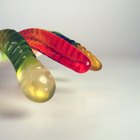
Will Gummy Worms Melt If Baked in ...
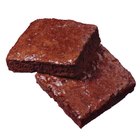
How to Fry Brownies

What Are the Causes of Pie & Pastry ...

Chocolate Chip Cookie Dough Brownies

Canola Oil Vs. Lard in Baking

What Happens When You Forget to Put ...
How to Substitute Applesauce for Butter ...
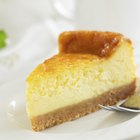
Gluten-Free Cheesecake Nut Crust
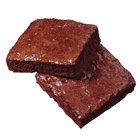
How to Replace Yogurt for Butter in ...
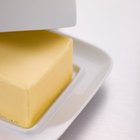
Can You Grease a Cake Pan With Butter?

Can I Substitute Bleached for ...
How to Make a Light, Perfectly Baked ...
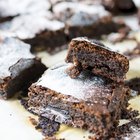
Substitutes for Vegetable Oil in ...

How to Substitute Applesauce for Oil in ...
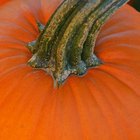
How to Make Pumpkin Bread Moist
How to Use Unsweetened Applesauce in ...

How to Make Thin Extra Crispy Pizza ...
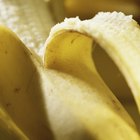
How to Replace Butter With Banana in ...
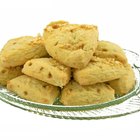
What Is the Difference Between Scones & ...
How to Keep a Pie Crust From Bubbling ...
References
- The Deluxe Food Lover's Companion; Sharon Tyler Herbst and Ron Herbst
- The Science of Good Cooking; Editors at America's Test Kitchen and Guy Crosby
- The Most Common Cooking Mistakes
Writer Bio
Susan Lundman began writing about her love of cooking, ingredient choices, menu planning and healthy eating after working for 20 years on children's issues at a nonprofit organization. She has written about food online professionally for ten years on numerous websites, and has provided family and friends with homemade recipes and stories about culinary adventures. Lundman received her M.A. from Stanford University.